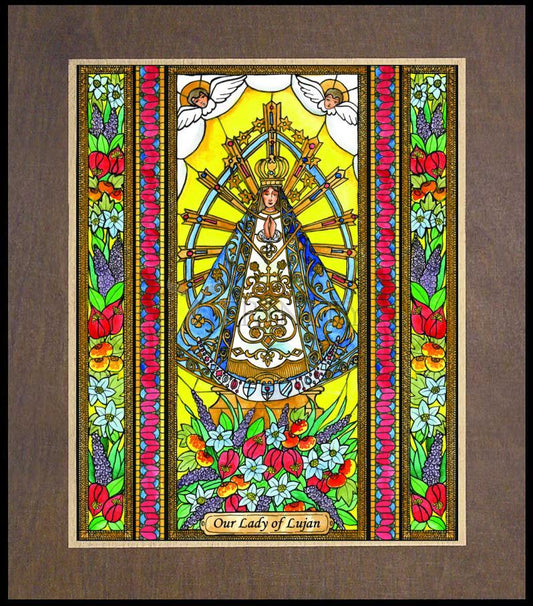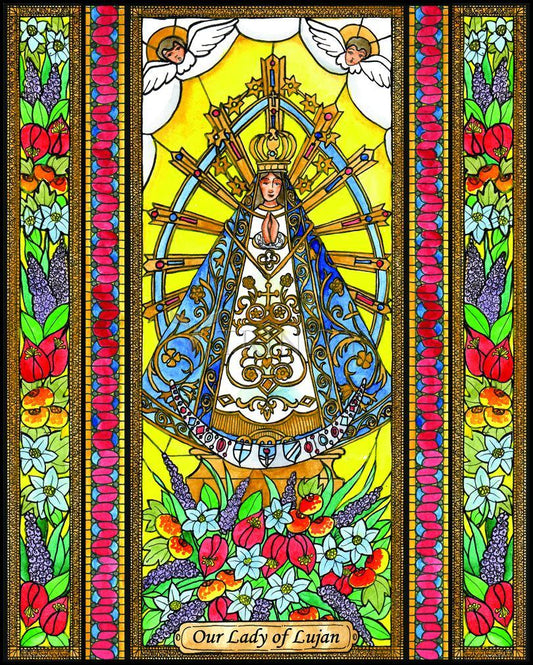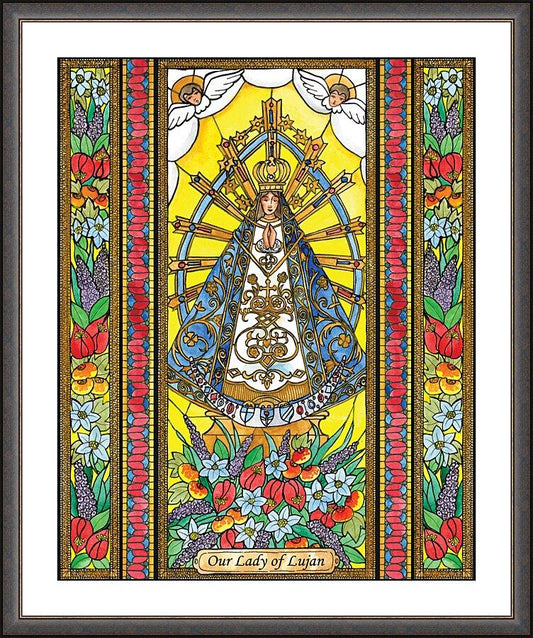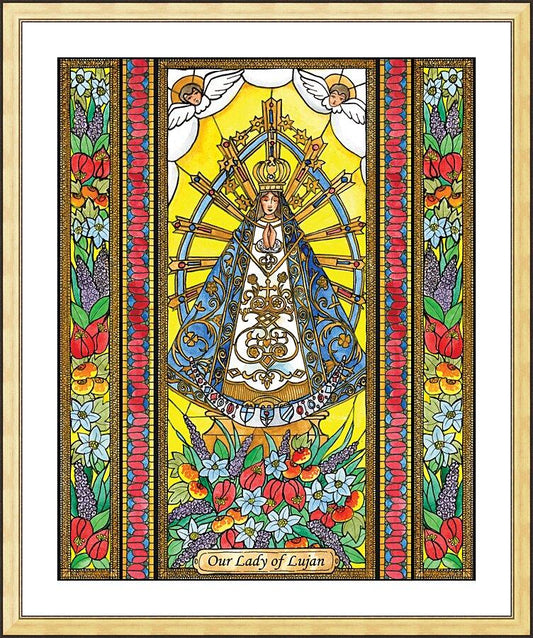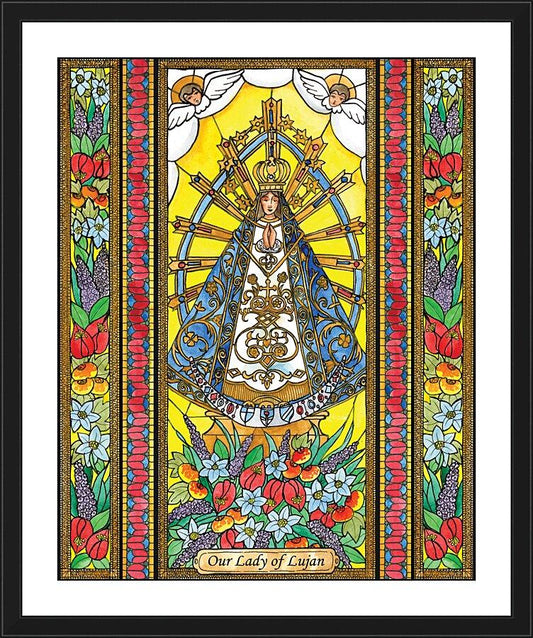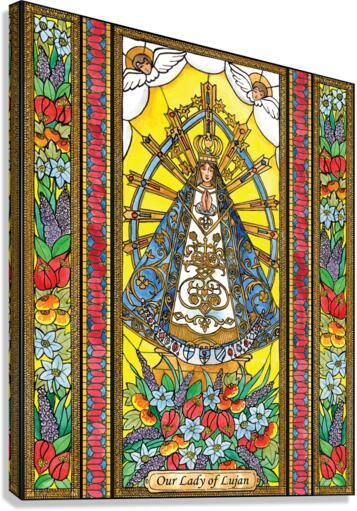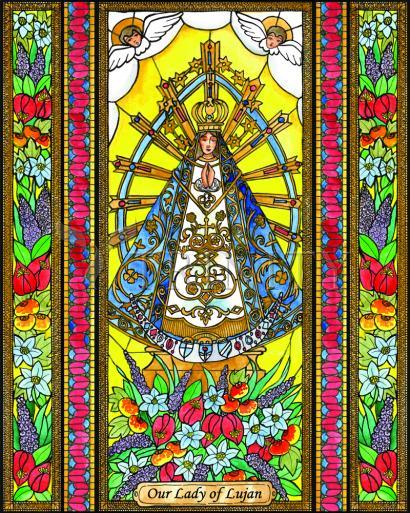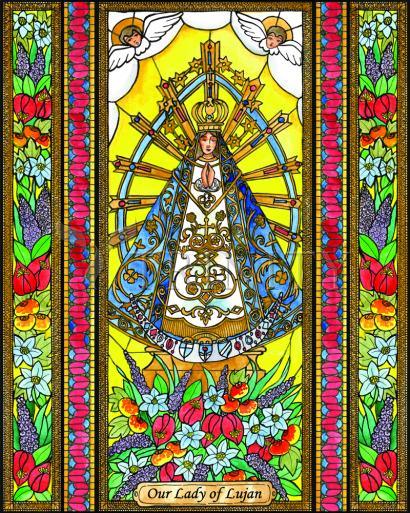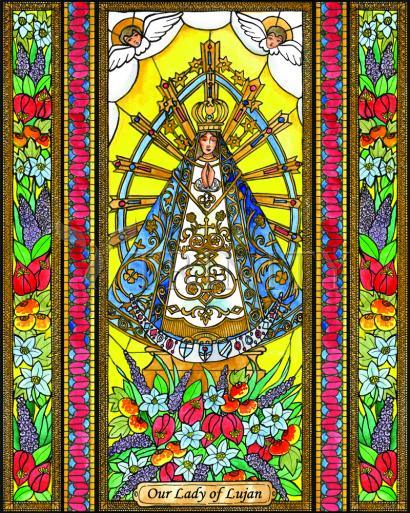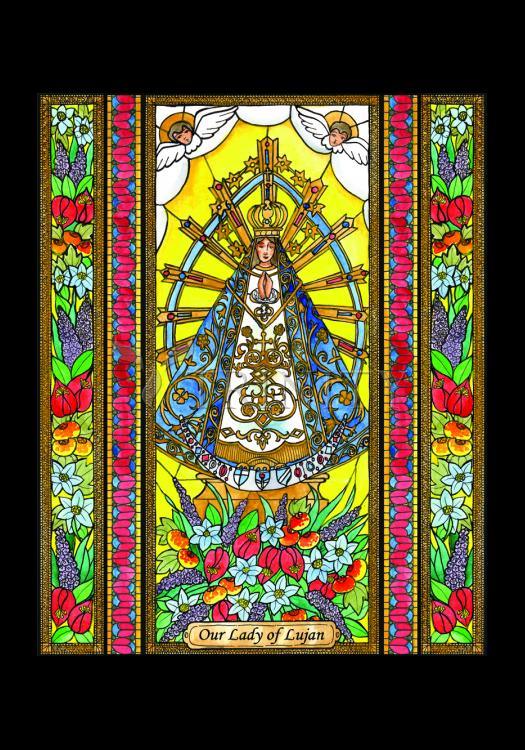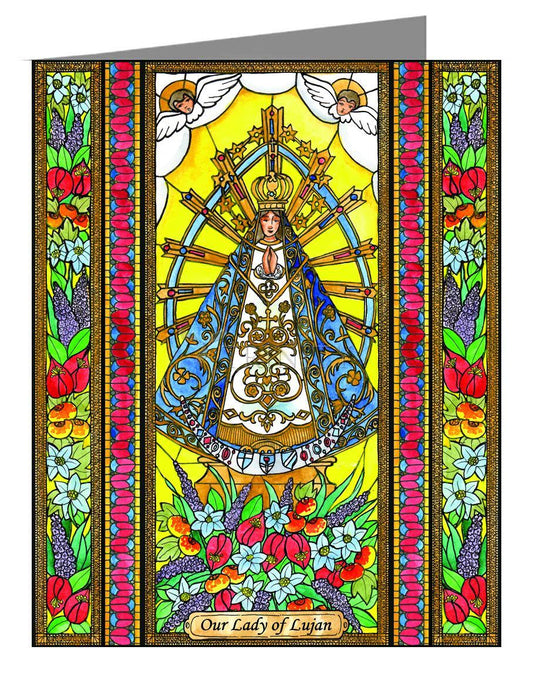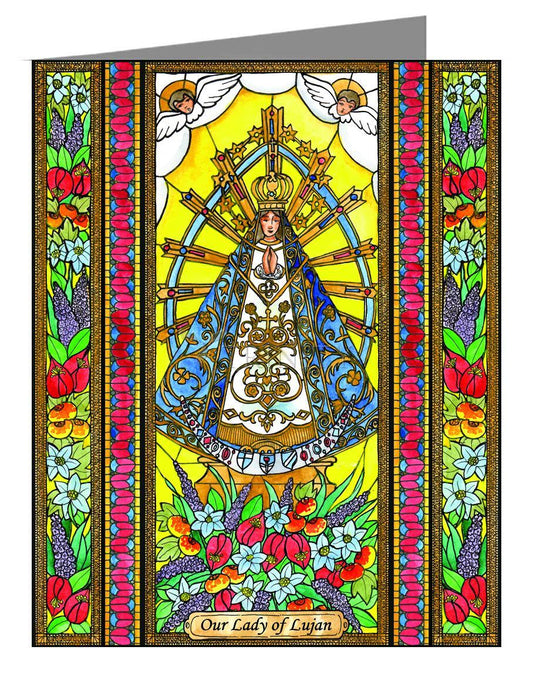ARTIST: Brenda Nippert
ARTWORK NARRATIVE:
This story of Mary goes back to the 1600's. The story goes that the terra cotta statue was made in Brazil and was being transported to the village of Sumampa. The caravan carrying the statue stopped for the night near Lujan in Argentina. Early the next morning, the group prepared to continue their journey, but the cart with the statue of the Virgin, would not move. No matter how much they coaxed the oxen just stood still. When the statue of Mary was removed, they went on their way. The people decided that Mary wanted to stay there and a chapel was built for her. Pilgrims came from all over and miracles occurred. Eventually a beautiful basilica was built to house the little statue. She was clothed in blue and white and later Argentina's flag was designed to represent “the colors of the Immaculate of Lujan.” The faithful of Argentina have a special love for Mary and she must love them too because Pope Francis came from this faithful South American country.
Her feast day is May 8.
Read More
The history of the shrine begins in 1630, with a farmer who emigrated to Argentina from Portugal. Coming from a place where the Faith flourished, he was saddened by the lack of religious influence in his adopted district, and in particular in his village of Sumampa. He decided to help the situation by building a chapel on his land. He decided to write to a friend in Brazil, he asked the friend to send him a small statue of Our Lady for his chapel. The friend, unsure of how the farmer wanted Our Lady to be depicted, sent two statues"one of the Madonna with Child, the other a representation of the Immaculate Conception.
Having first been transported by sea, the images were then placed on a cart for the journey inland. Because of hostile natives in the region, a number of carts and pack horses banded together in a caravan. When darkness overtook the travelers after leaving Buenos Aires, they camped at the isolated ranch of Don Rosendo de Oramus. Early the next morning, the wagons and animals were readied for the rest of their journey. One by one the carts began to move, all except the one that carried the images of Our Lady. Progress was stalled when the driver was unable to coax the animals forward. The other drivers in the caravan came to help"but all the efforts were unsuccessful. Finally, it was decided that the animals might somehow be influenced supernaturally. And so it seemed, since the animals willingly moved when the statue of the Immaculate Conception was removed from the cart.
The statue of the Madonna and Child continued its journey and arrived safely in Sumampa, where it is still venerated under the title of Our Lady of Consolation.
As for the statue of the Immaculate Conception that was taken off the cart, it was solemnly carried to the ranch and enthroned in a room of its own. This room soon became a popular shrine and remained so for the next 40 years. Additional chapels, including the private one of Dona Ana de Mattos, became the temporary shrines for Our Lady of Luján over time. As other miracles were attributed to her intercession, the pilgrims began to come to pray in ever greater numbers. In 1677 her image was kept in a church built in her honor, until a larger one replaced it in 1763. Work on a large Basilica reached its completion in 1904 when the image of Our Lady of Luján was solemnly transferred there. Every October large crowds of youth walk the 40 miles from Buenos Aires to Luján in an overnight pilgrimage of great Marian devotion.
During the period of independence in the late 18th and early 19th century, the flag of the free Argentina was designed by Sargent Major Carlos Belgrano to reflect the "blue and white of the Immaculata of Luján." She has always been invoked as the patroness of all the regions of La Plata: Paraguay, Uraguay and Argentina.



